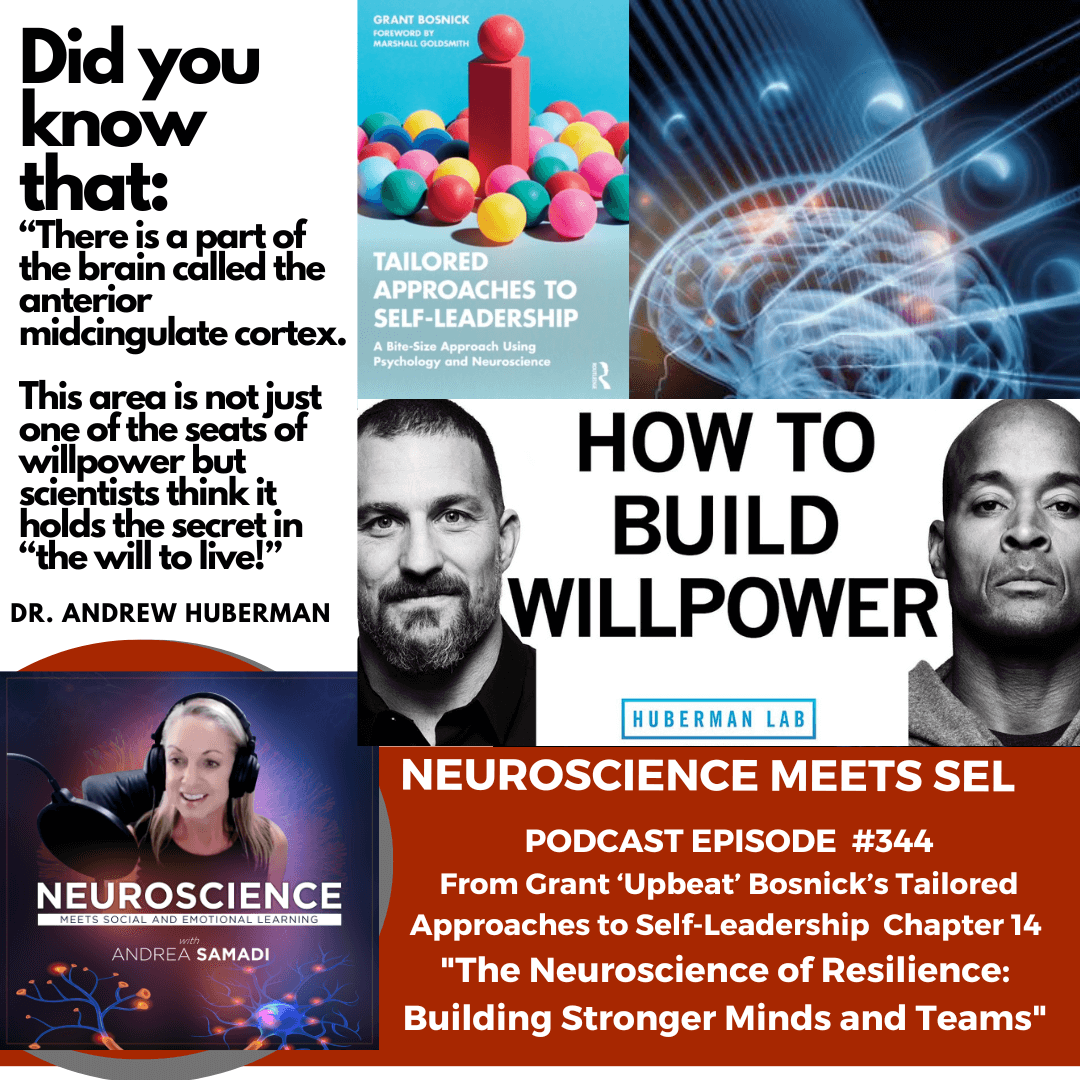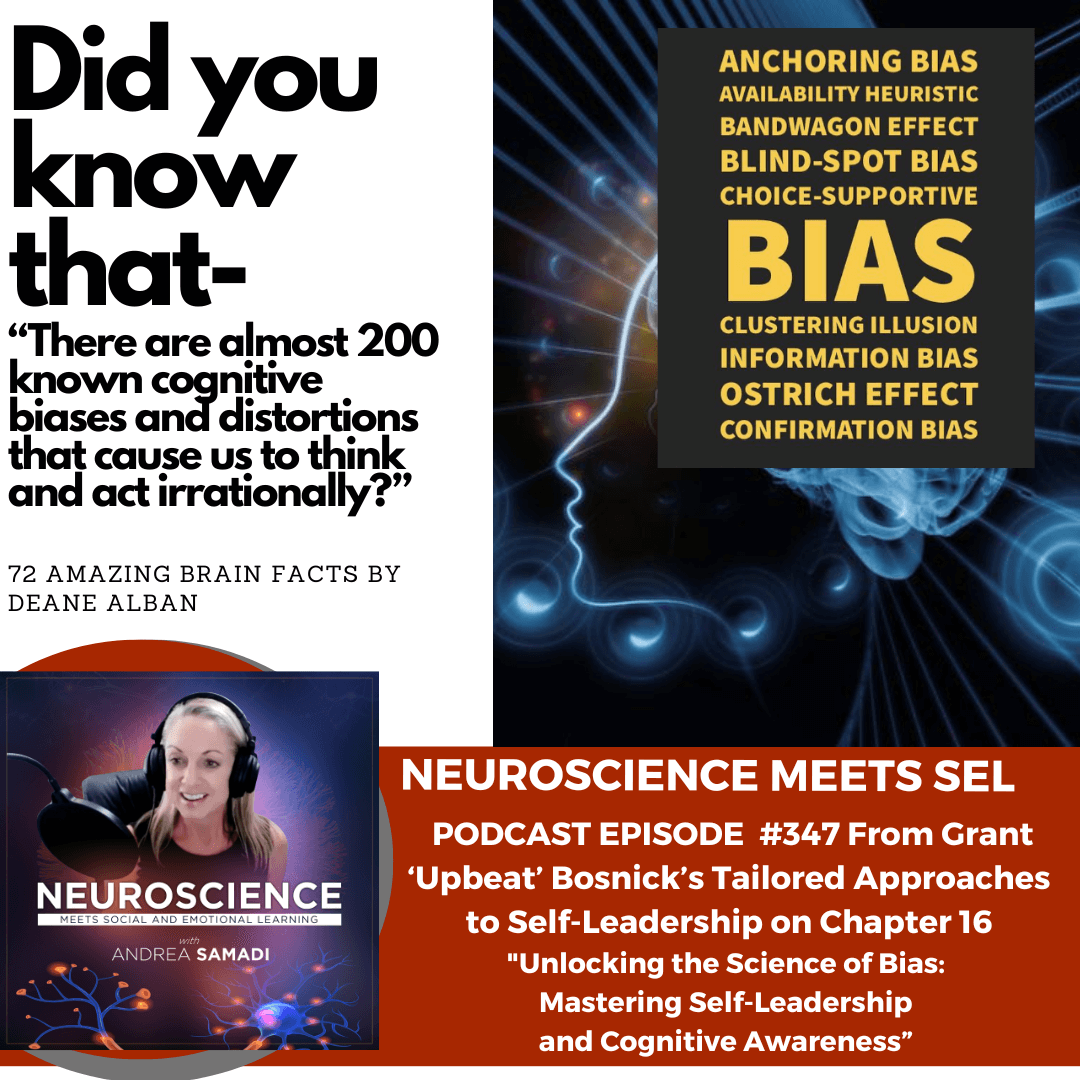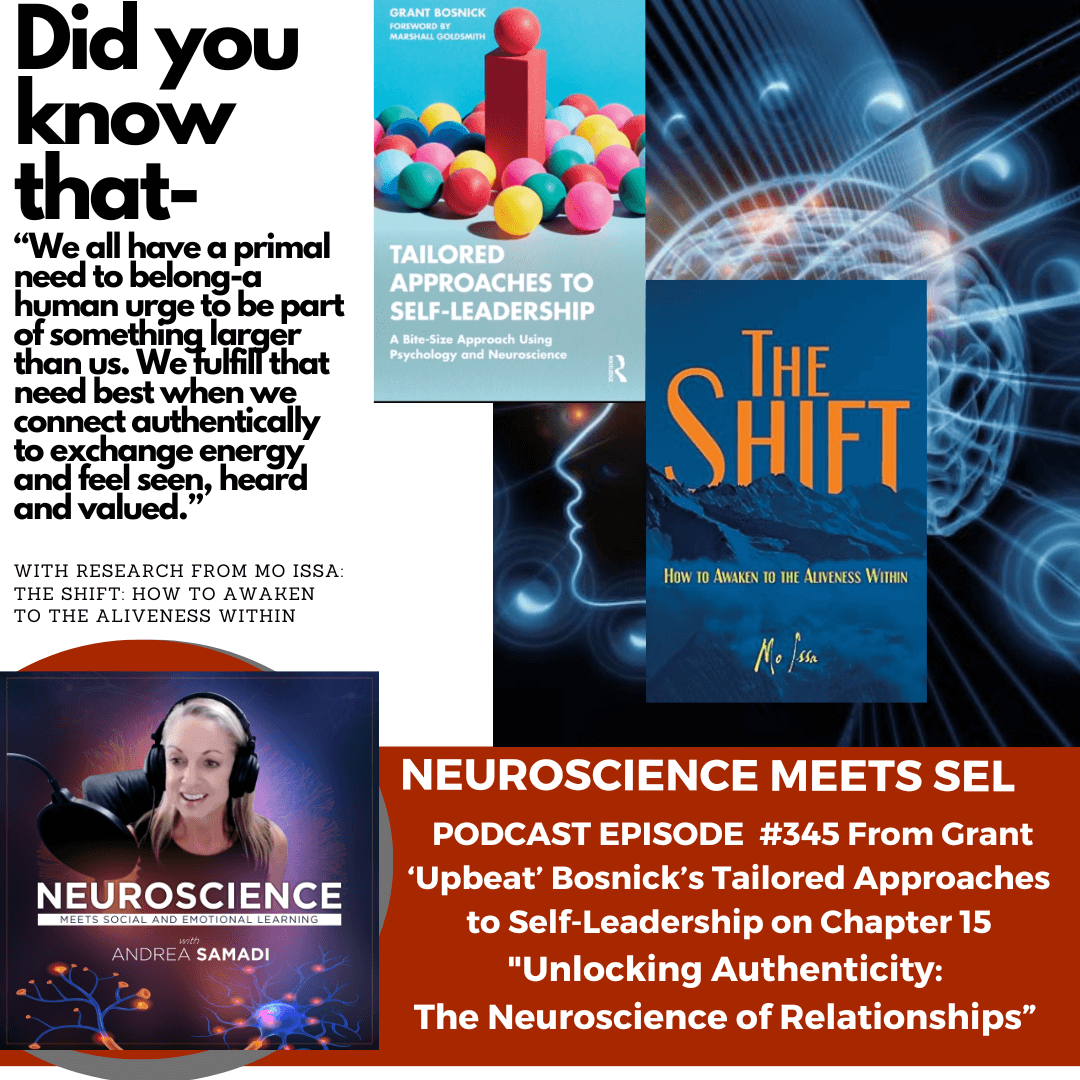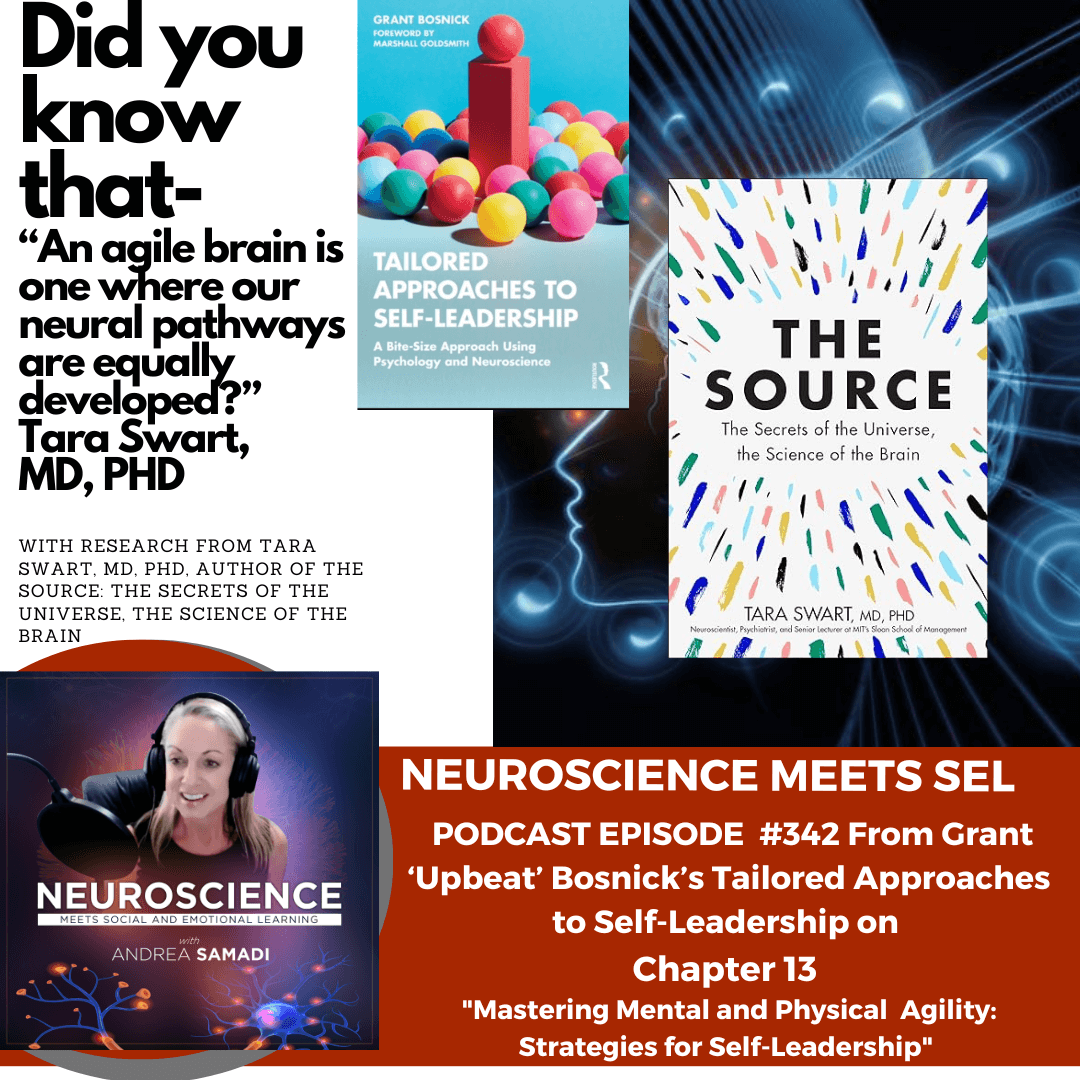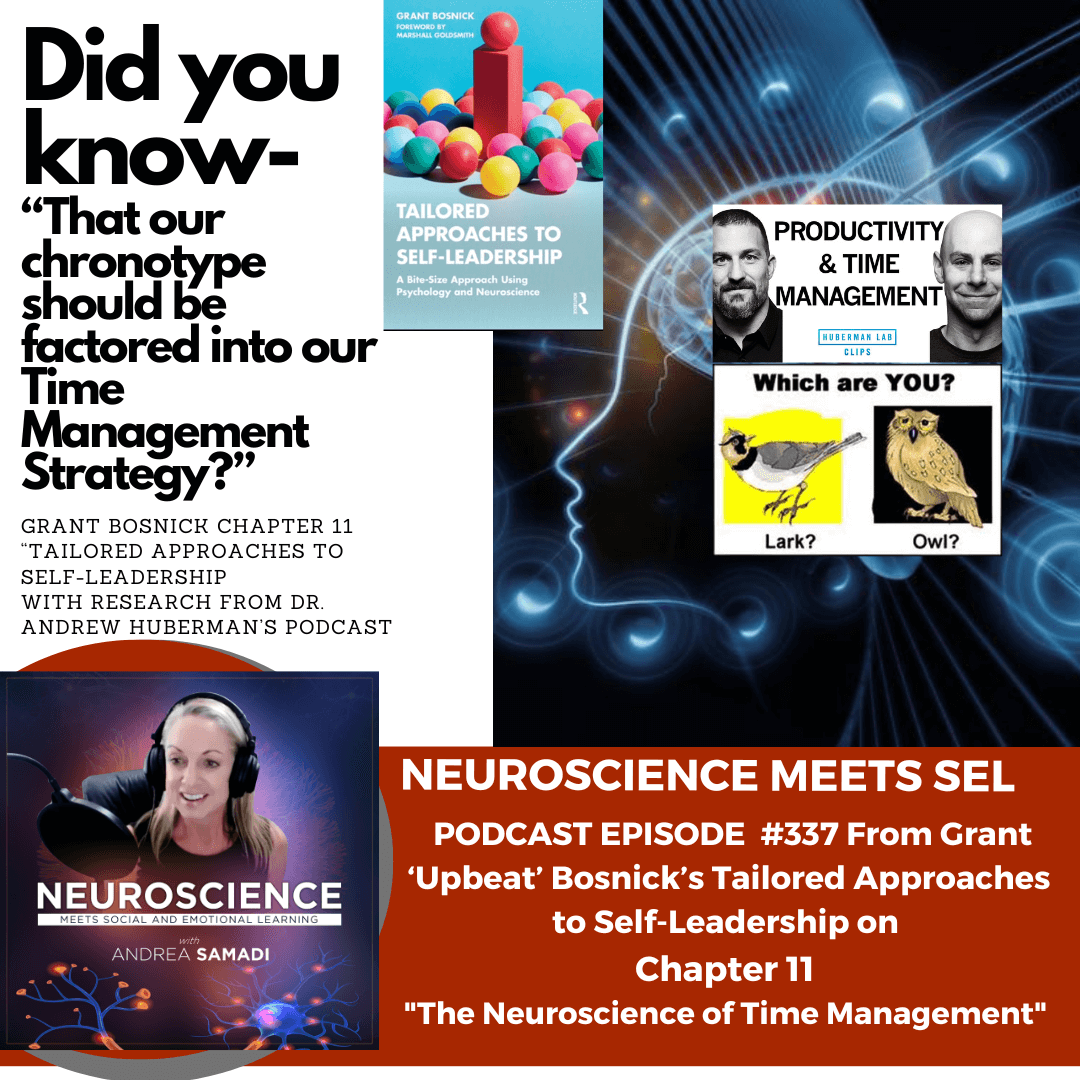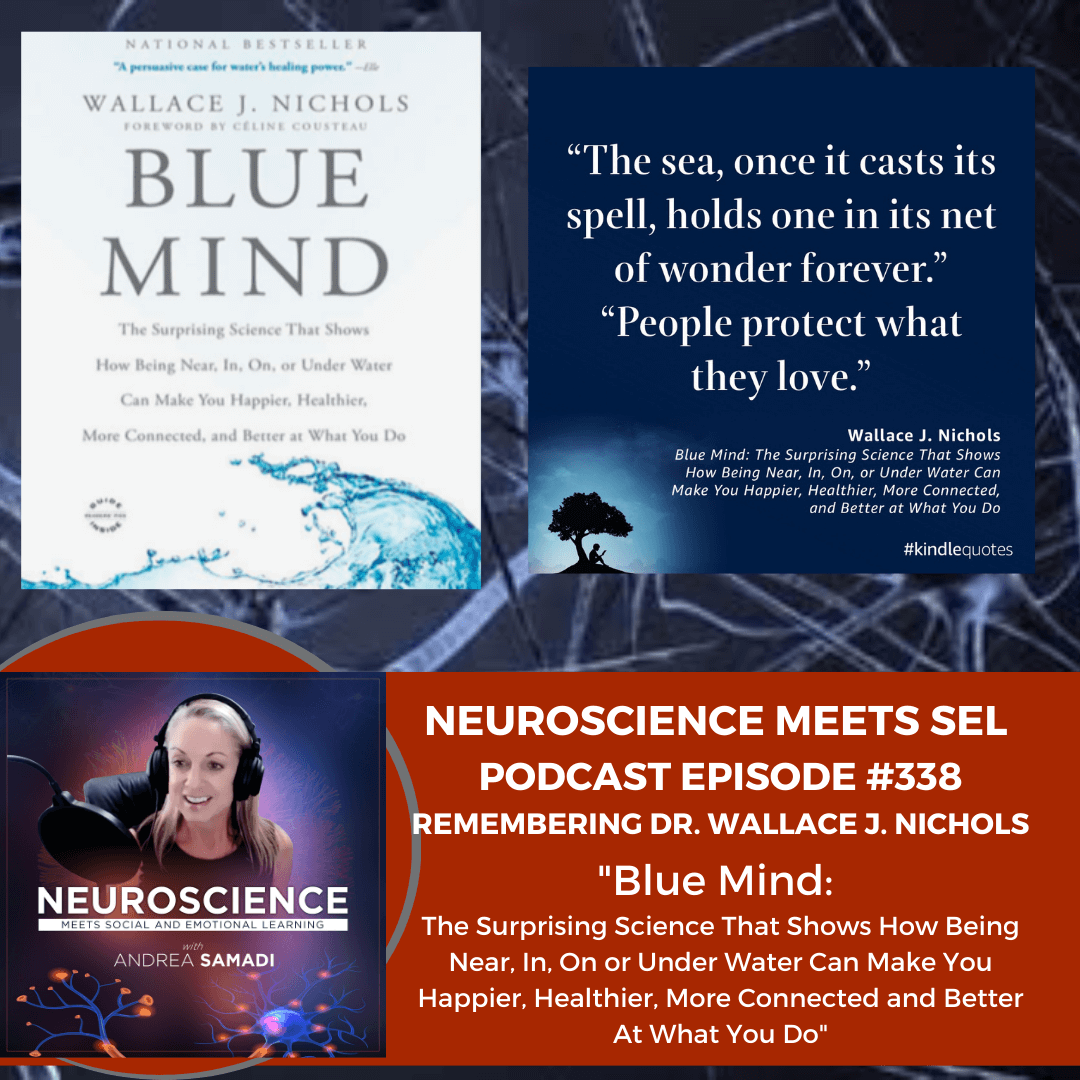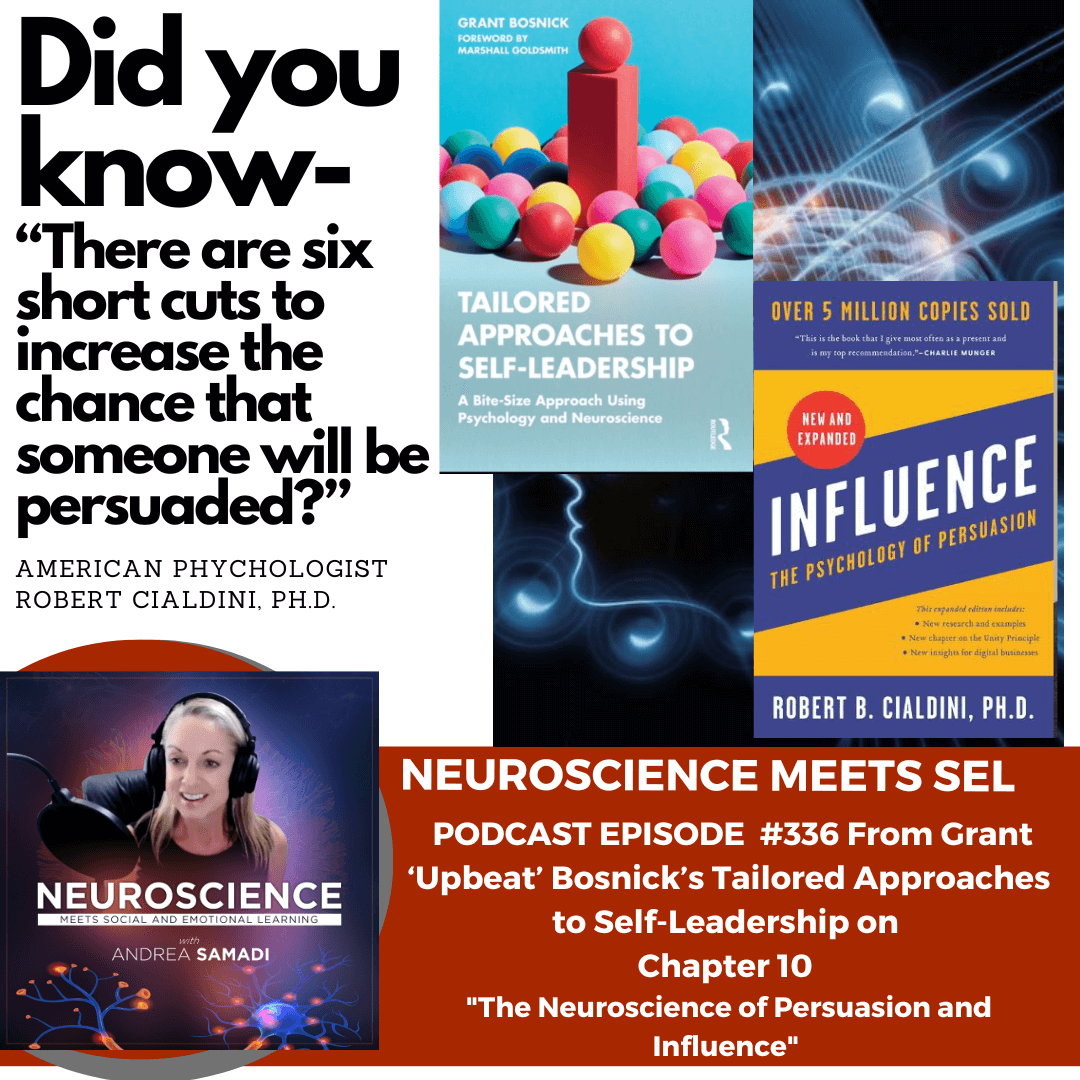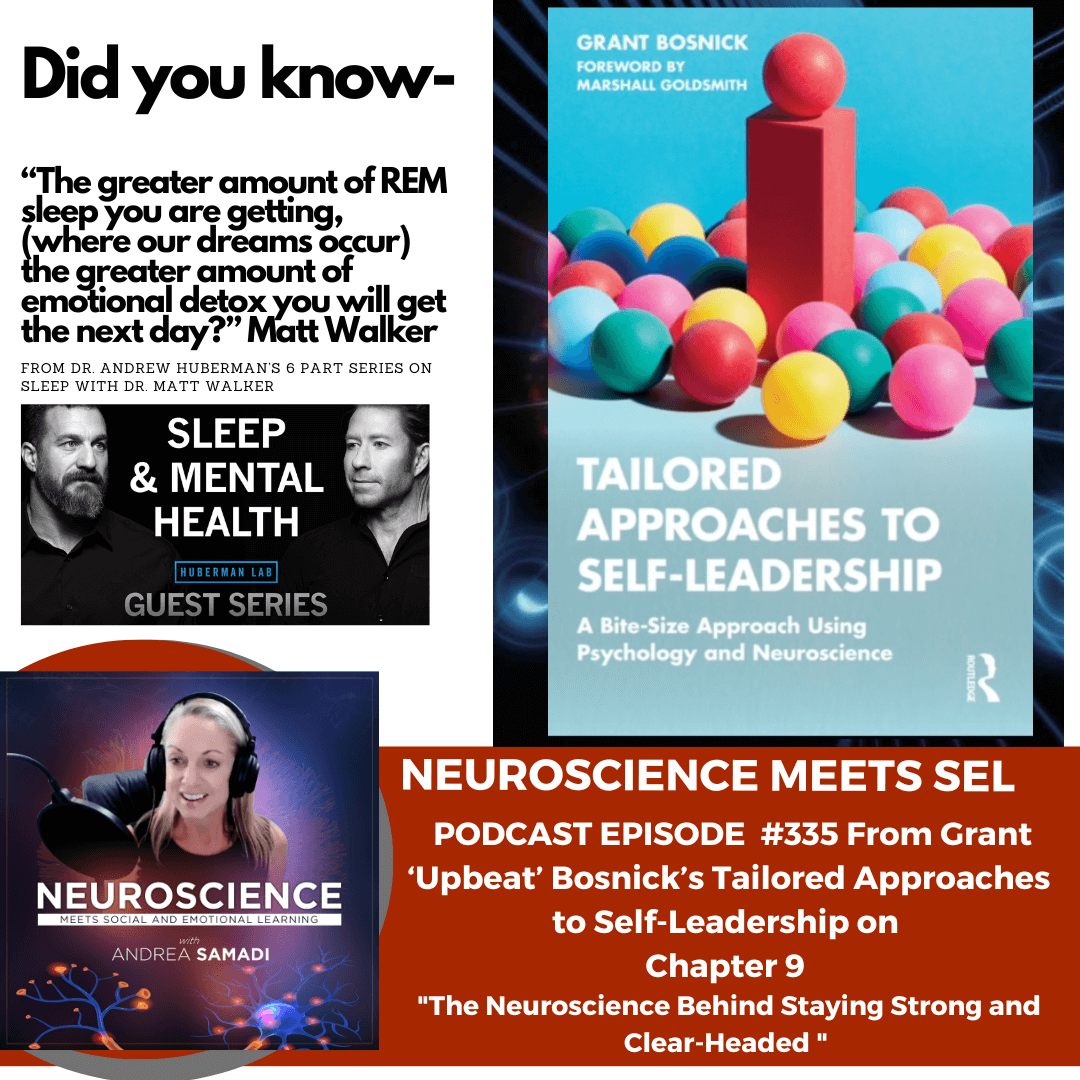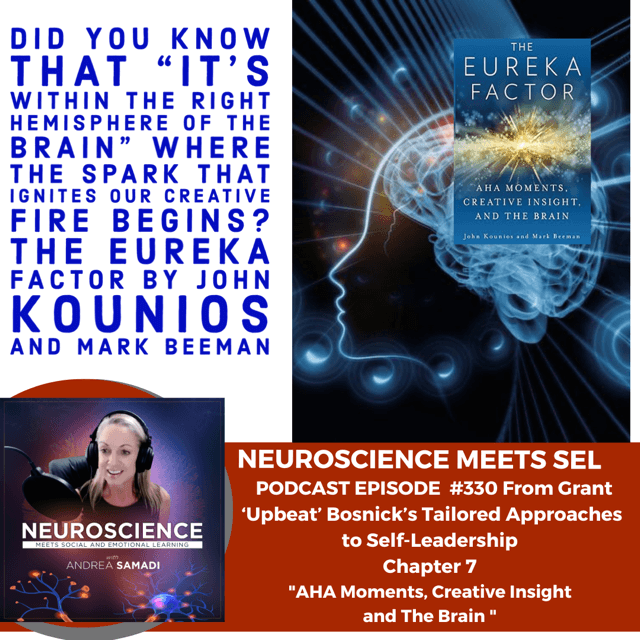The Neuroscience of Resilience: Building Stronger Minds and Teams: Insights from Grant Upbeat Bosnick (Chapter 14)
Description
Welcome back to Season 12 of the Neuroscience Meets Social and Emotional Learning podcast, where we connect the science-based evidence behind social and emotional learning and emotional intelligence training for improved well-being, achievement, productivity, and results using practical neuroscience.
In Episode 344, we continue with our 18-week self-leadership series, diving into Chapter 14 of Grant Bosnick's book to explore the neuroscience of resiliency. We revisit past episodes with Horacio Sanchez to understand the factors that contribute to resilience and discuss the intriguing analogies presented by Bosnick, including the donkey in the well and the carrot, egg, and coffee bean story.
Learn how to build resilience within yourself and your teams by focusing on Patrick Lencioni's five functions of a high-performing team. Discover how developing willpower, a crucial faculty of the mind, can enhance your ability to overcome adversity. We also delve into new research on the anterior mid-cingulate cortex, a brain region associated with willpower and resilience.
Join us as we uncover strategies to harness resilience, strengthen our brains, and emerge stronger from life's challenges. Don't miss this insightful episode that equips you with the tools to face adversity head-on and lead with resilience.
On today's EPISODE #344 “The Neuroscience of Resilience: Building Stronger Minds and Teams” we will cover:
✔ A review of past EP 74 and EP 286 on “Building Resiliency, Grit and Mental Toughness”
✔ A review of Horacio Sanchez’s work on resiliency: protective vs risk factors.
✔ Ch. 14 from Grant Bosnick’s Tailored Approaches to Self-Leadership book with 2 intriguing analogies presented by Bosnick, including the donkey in the well and the carrot, egg, and coffee bean story.
✔ Learn how to build resilience within yourself and your teams by focusing on Patrick Lencioni's five functions of a high-performing team. Discover how developing willpower, a crucial faculty of the mind, can enhance your ability to overcome adversity.
✔ Discover how developing willpower, a crucial faculty of the mind, can enhance your ability to overcome adversity.
✔ We also delve into new research on the anterior mid-cingulate cortex, a brain region associated with willpower and resilience.
For Today, EPISODE #344, we are moving on to Chapter 14, reviewing “The Neuroscience of Resiliency,” a topic we have covered a few times on this podcast, way back with Horacio Sanchez, who named his Educational Consulting Business Resiliency Inc. back on EP #74[i] and then we did a deep dive Brain Fact Friday on EP #286 “Building Resiliency, Grit and Mental Toughness.”[ii] On this episode we reviewed Horacio Sanchez’s definition of resiliency as “a collection of protective risk factors that you have in your life” and that there are some factors we are born with, and others come in through childhood, family, school, life events and social experiences.
Horacio reminds us that “if you have little risk, it takes less to be resilient. But—if you have a lot of risk, it takes a lot more protective factors to offset the scale.” This is why two people can possibly respond in two completely different ways after a traumatic experience. One person walks away, dusts themselves off, and recovers quickly, (they had more reservoirs of resilience to tap into) while the other has a completely different outcome, and needs more assistance to get back on track.
With resiliency, we can overcome adversity or difficulty and have good outcomes in our life, but you can see why not everyone is born with exactly the same protective factors needed, so we don’t all have the same levels of resiliency. Horacio mentioned that “25% of the population are naturally resilient” and his work focuses on instilling this trait in those who are not naturally resilient due to the number of risk factors associated to them. To this day, he continues with his mission, flying around the country, helping our next generation of students to become more resilient.
Resiliency came out as a low priority for me with the with 0% (Pathway 5) along with Change and Agility, and it makes more sense to me now that I understand the protective and risk factors that I faced growing up as a child, from my family, from school, life and social events. When I review the list, I can see that I was fortunate to have more protective factors, than risk.
IMAGE FROM EP 74 with Horacio Sanchez.
If you’ve taken the leadership self-assessment[iii], look to see if Resilience (in Pathway 5) along with change and agility, is of a low, medium or high priority for you to focus on this year.
If you haven’t listened to EP 74, or 286, where we dove deeper into the building resiliency, grit and mental toughness, I highly encourage that you listen to both of these episodes, in addition to what we will uncover today on resiliency.
So what does Grant Bosnick have to say about building resilience in ourselves, and our teams in chapter 14 of his book? He opens up the chapter with a situation with a farmer and his donkey, who had fallen into a hole in the ground, (a well) and couldn’t get out. Finally, after trying to get the donkey out, he gave up, and decided to shovel dirt into the well, since the donkey was old, and not worth saving. At first Grant writes that the donkey cried with the dirt being shoveled onto him, until he eventually stopped and was quiet. When the farmer looked into the hole he was amazed at what he saw. With each shovel of dirt, the donkey would shake it off his back, and use the dirt to climb up higher, until he was able to easily step out of the hole and trot off happily.
What Grant is showing us at the start of this chapter is that we all will have dirt shoveled on our backs in our life, and “that we can either get buried in the dirt or shake it off and take a step up. Each adversity we face is a stepping stone, and we can get out of the deepest wells by shaking off the dirt and taking a step up.” (Chapter 14, Resilience, Bosnick, Page 160).
There was another analogy in Grant’s book that I liked, about a carrot, an egg and a cup of coffee. The story went like this. There was a young woman who went to her mother one day, complaining the things were difficult for her with her life. Her mother took her into the kitchen and filled three pots with water, and placed them on the elements, bringing each one to a boil. One pot she placed carrots in, the second, an egg and the third one, coffee beans. After 20 minutes, she asked her daughter what she saw. Her mother’s explanation was eye-opening.
She explained to her daughter that “each of these objects faced the same adversity—boiling water. Each reacted differently. The carrot went in strong, hard and unrelenting. However, after being subjected to the boiling water, it was softer and became weak. The egg was fragile…but after being in the boiling water, it’s inside became hardened. The ground coffee beans were unique, however. (Bosnick writes that) after being in the boiling water, they changed the water…(and the mother asked her daughter) when adversity faces you, how do you respond? Are you a carrot, an egg or a coffee bean?” (Chapter 14, Resilience, Bosnick, Page 161).
Grant asks the reader of his book to think about this question. Which one would you pick? “Are you the carrot that seems strong but with pain and adversity (wilted) and became soft, losing its strength? Are you the egg that starts with a soft heart, but hardens with the heat? Or are you like the coffee bean that actually changes the hot water, the very circumstance that (brought) the pain?” (Chapter 14, Resilience, Bosnick, Page 161). I’m hoping that we all desire to experience change with the adversity we face.
Bosnick gives two real-life examples of famous people who took their pain, and changed for the better, because of it. Terry Fox, a distance runner from British Columbia, Canada was his first example and Kawhi (Ka-why) Leonard, a professional basketball player from the NBA. You can look up these stories, if you don’t know them already. Growing up in Canada, I remember Terry Fox’s story well. Terry Fox took the pain of a cancer diagnosis that led to one of his legs being amputated and replaced with an artificial leg, and rather than giving up, or becoming hard or soft, he changed the situation with his Marathon of Hope. It was “first held in 1981, and has now grown to involve millions of participants in over 60 countries and is now the world’s largest one-day fundraiser for cancer research, with over $750 million Canadian dollars raised in his name.” (Chapter 14, Resilience, Bosnick, Page 162).
Bosnick reminds us that “resilience is not only about bouncing back from adversity, but rather it is about surviving and thriving through the stress caused by the adversity, and changing our situation to make it better.” (Chapter 14, Resilience, Bosnick, Page 162).
Building Resilience in Ourselves and Then with Our Teams
After Bosnick focused on building resilience in ourselves, he went on to show how to build resilience in our teams, and he mentioned a book, that we have recently talked about with mediation expert John Ford, from EP 340.[iv] I love making connections with past episodes, and when I read Bosnick mention The Five Dysfunctions of a Team by Patrick Lencioni[v], I went straight back to that episode with John Ford. In chapter 14, Bosnick outlines “the five dysfunctions of teams: absence of trust, fear of conflict, lack of commitment, avoidance of accountability, and inattention to results. (Next he outlines) the five functions of a high performing team: trust, absence of fear of conf

